People don’t usually wake up thinking about your brand first thing in the morning. Consumers think about their own problems and seek potential solutions. Let’s assume your brand is the solution for their pain point. How do you get your product or service out there? How do you create demand for it?
There is a whole science behind making your brand desirable for customers that aren’t even aware of its existence. Demand generation marketing is where the magic begins for B2B and SaaS companies, and surprisingly, there’s much more to it than just creating demand. Let’s dig in!
What is demand generation?
Imagine a typical sales cycle. First, a marketer fights for a lead’s attention, attacks with convincing CTAs, and an in-your-face kind of strategy. Then, ideally, a sales rep closes the deal. Or, more likely, loses this lead somewhere along the pipeline because the product doesn’t fit their needs.
As you can see, there is no real synergy between the two teams. Everyone does their own thing, and it’s more about dividing and conquering than building sustainable relationships with clients.
The good news is that demand generation is here to help. Demand generation marketing means the complete alignment of marketing and sales activities to create demand and satisfy it. Another way to define demand generation is a comparison with a bridge. It’s a two-way communication strategy: you need to listen attentively to your target groups and their needs before talking to them. You also need to share customer insights across teams. Instead of firing blindly, scratch the customer’s itch with every single email, slide, or any other piece of content.
Demand generation touches every part of the sales funnel because it helps to channel efforts across teams. It drives revenue, long-lasting engagement, and customer retention while fostering genuine loyalty towards your brand. Best-case scenario, demand generation tactics will turn your potential leads into brand advocates even before they become paying customers.
Demand generation marketing is unimaginable without automation and gathering data from and about your audience. Test every piece of content before it sees the light of day. Don’t hesitate to ask for missing pieces of information from your leads. Employ reliable tools and platforms to accumulate data, segment leads, and optimize campaigns. All of it will help you tailor the most relevant solutions.
Let’s recap.
What is demand generation?
- taking a solution-centric approach;
- building brand authority;
- exceeding customer expectations;
- aligning marketing and sales;
- crafting unique content and experiences with laser-like precision;
- performing data-driven campaigns;
- guiding potential prospects and leads.
What is not demand generation?
- taking a product-centric approach;
- finding excuses to not invest in content creation;
- separating marketing and sales;
- over-promising and under-delivering;
- talking about your brand instead of bringing value.
Demand generation is a holistic approach requiring consistency, dedication, and openness to experimentation. It’s not only for companies with flashy names and deep pockets. A generous budget is a great help, but it’s certainly not a must, especially in the beginning.
What is the difference between demand generation, lead generation, and inbound marketing?
Demand generation is an umbrella term — it’s safe to say that lead generation and inbound marketing fall under it. These are components, not stand-alone strategies. It’s more like: spread the word, create demand, and leads will follow.
Your goal is not to create demand just for the sake of it. You always want to capture leads and turn them into customers. Develop a demand generation strategy that already includes lead generation tactics as well as content marketing tactics.
Inbound marketing tactics help you capture existing demand and generate demand from new audiences for your product or service. Creating killer content is crucial here, and we’re talking about two types of it:
- Ungated content to create influence, build brand authority, demonstrate your expertise, and deepen engagement.
- Gated content to collect information from users, address existing customer problems, solve problems, and generate leads.
Lead generation is an essential part of any funnel. It converts targeted audiences into quality leads — with or without the help of content. The next step is to qualify and nurture these leads into customers.
Demand generation best practices and strategies
It doesn’t matter whether you’re performing solo or acting as a part of a marketing team. There are a few steps you need to take to create long-lasting demand. As your business grows, so will the scale of your efforts, but core principles of creating and retaining demand will stay the same.
Increase the influence and authority of your brand
Creating awareness takes much more than just showing your logo. Consumers mostly buy from the brands we trust. Make sure you’re building consumer trust in your brand brick by brick along the way. Work on your social media presence, write detailed blog posts, participate in conferences, and collaborate with industry experts. It’s time for high-quality ungated content.
One of the best things you can do is bring your audience along with you. When people feel like they’re part of your brand’s journey, they’re much more likely to support, share, and buy from you, so let them in.
SourceKati Noakes
Marketing Director at YouScan
Make sure to collect testimonials from your existing customers and place them on your website. Real photos, quotes, and videos are much more convincing than simple logos. A perfect testimonial is one describing a problem and the way your product solved it.
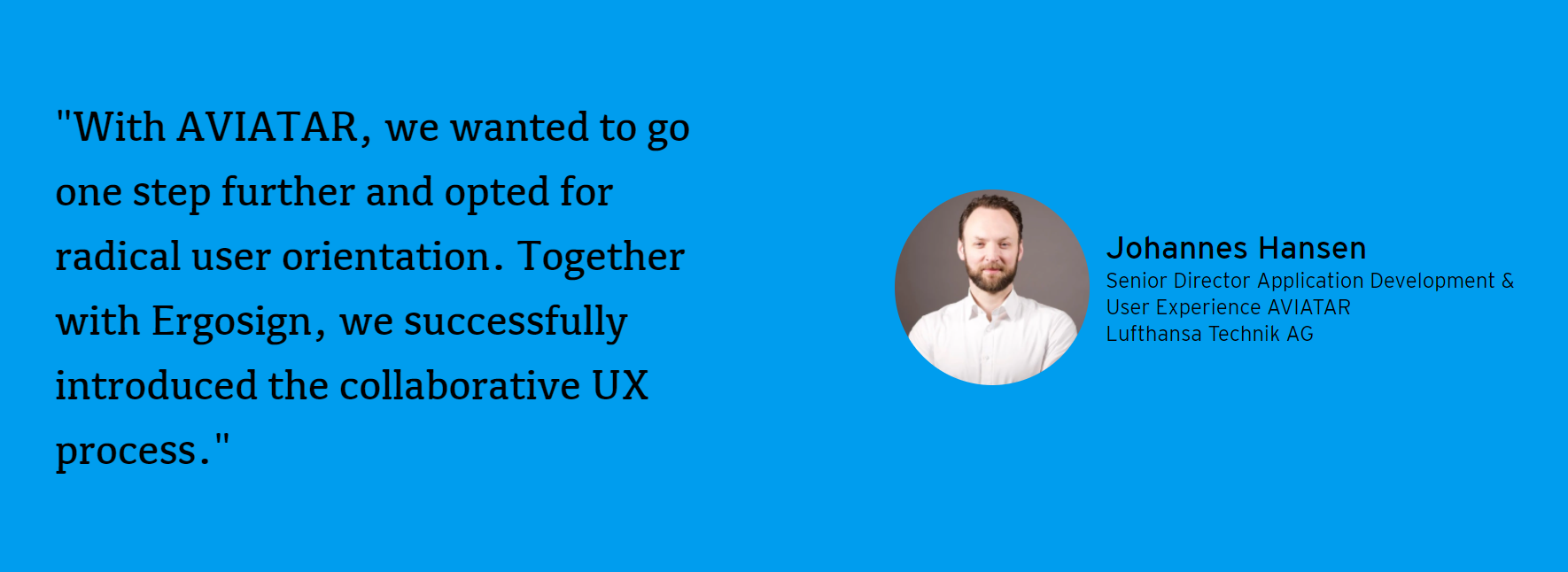 An example of feedback showing a real person behind a company name
An example of feedback showing a real person behind a company name
Building authority requires a long-term commitment, but it eventually pays off. Stay proactive and focus on brand positioning and awareness — you don’t need an extreme budget to, for example, kick off a series of webinars on YouTube and invite a few executives or influencers to speak on some buzzing topics of the industry.
Don’t be afraid to talk if you don’t have any voice share yet. Even if you’re a small brand, you still have a unique vision, expertise, and knowledge to spread. Cast a wide net, and, eventually, it will be full of shrimp.
Create, update, and adjust buyer personas and your company profile
To put it simply, a buyer persona represents someone who needs your solution the most. And a company profile is the fictional company your buyer persona works at. The more detailed and realistic personas you create, the easier it will be to pin down what their pain points are.
Here’s an example of a buyer persona:
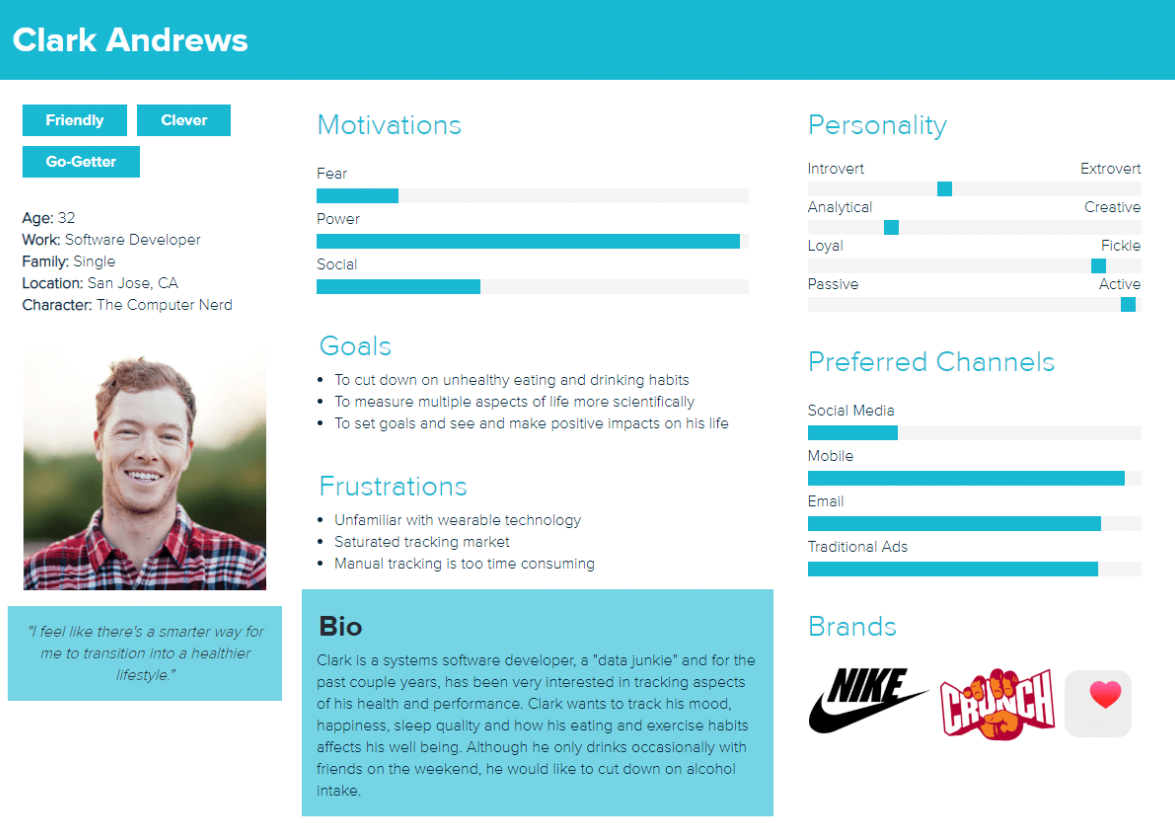 When creating a buyer persona, you can come up with their personal traits and preferences; source: Filestage
When creating a buyer persona, you can come up with their personal traits and preferences; source: Filestage
A buyer persona should include their:
- job title;
- interests;
- career goals;
- objectives;
- marketing triggers.
Keep in mind that your initial offer may not be presented to a decision-maker at the target company directly — there is always a chain of events and discussions preceding a final decision. Aim at the people facing the very problem your product solves, not at the people formally approving the purchase.
Start conversations in the right place at the right time
People love to read about their problems and possible solutions, buzzing trends, and technologies in the industry. But they also love to talk about it with someone else. So, community management should be your friend — stay active in comments, start debates, and spark conversations.
Make every piece of your brand’s content actionable and let people engage with it without jumping through hoops. Address issues, create posts for certain target groups and react quickly. Include conversational marketing in your demand generation strategy: use advanced chatbots to stay in touch 24/7.
Adding pricing and discount calculators will also make life easier for your future customers as well as for your sales team. Below is an example of such pricing calculator from Fastly.
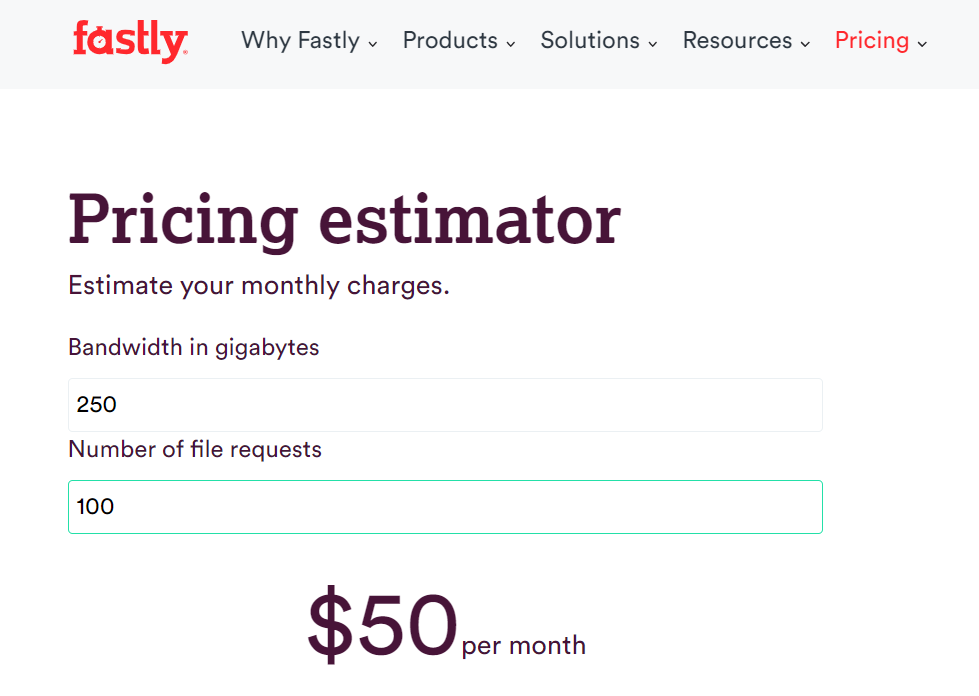 Fastly uses a simple but elegant pricing calculator
Fastly uses a simple but elegant pricing calculator
Test everything
Commercial posts on social media in 2020 do not attract enough attention and engagement organically because this digital space is oversaturated. And you only have one shot with every single piece of relevant content.
To cut through the noise, run paid ads first, test different versions, and post the most engaging one. A/B testing is also a useful way to define your best-performing channel for each type of content. The same applies to email campaigns. Do not bombard your prospects and leads but do not abandon them either. Find the right tone and frequency to discover the full potential of email marketing by using A/B testing.
Disturbingly low open rates? Experiment with subject lines. Not enough clicks on your links? Test different buttons. Unsatisfying reply rates? Time to write a more compelling email copy and test two versions. Only tests with a real audience can give you invaluable data and confidence.
A true demand generator is an experimenter at heart. You can infinitely test different headlines for Google Ads, blog formats, messages, UI copy until you find what works best for your target audience.
Provide value
Encourage contact in exchange for value by creating content worth saving and spreading. Use gated and ungated content to capture attention and provoke long-term engagement. Make some content downloadable only after a sign-up so that you can get an email address and make the first step.
But, giving out an email address is not something people like to do. This is why you need to add a lead magnet to convince website visitors there’s enough value for them already, and there’s more to come. The best way to do this is to share your wisdom as Wrike does.
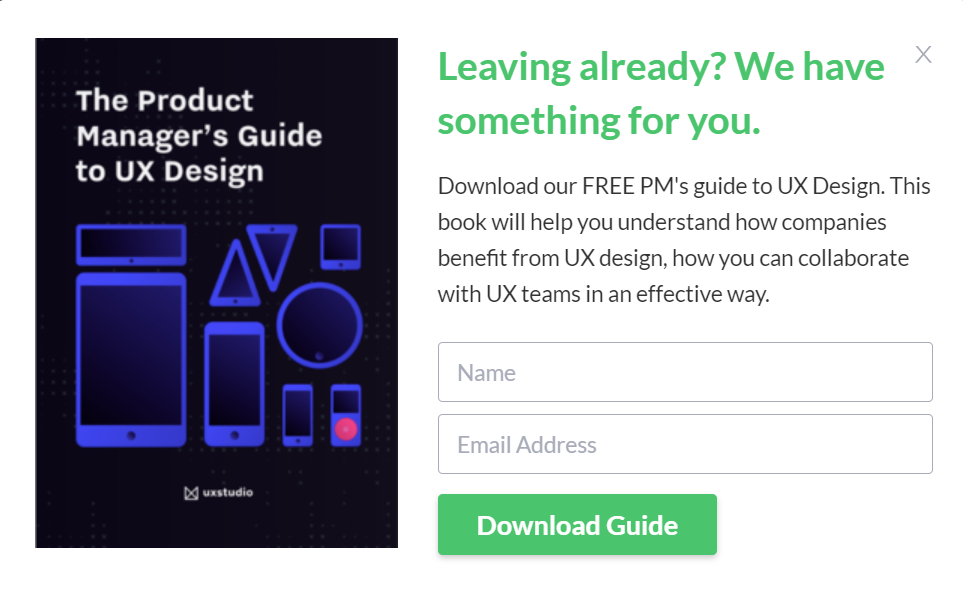 Wrike uses a typical lead magnet — a free eBook
Wrike uses a typical lead magnet — a free eBook
Here are some effective formats for your lead magnet:
- white papers;
- eBooks;
- infographics;
- case studies;
- podcasts;
- checklists;
- playbooks;
- templates;
- guides;
- educational courses.
Try at least three of them to create a library chock-full of knowledge across all your resources.
Since demand generation tactics are all about automation and data-driven actions, it might be a good time to rethink and upgrade your marketing toolkit. To create powerful demand generation campaigns on a small scale, you will need:
- a CRM system;
- a chatbot service;
- a content management system that gives you the option to track content performance and get real-time engagement analytics;
- an email automation system.
Big companies with overwhelming amounts of data to collect and analyze usually employ business intelligence platforms like Tableau.
 Tableau Desktop offers unlimited data exploration for big brands
Tableau Desktop offers unlimited data exploration for big brands
Work on creating frictionless conversion
79% of all marketing leads never convert into sales, mainly due to a lack of nurturing, and this is why the lead nurturing process should be one of the pillars of your demand generation marketing.
If your company has a complex sales process or a long sales cycle, leads won’t turn into closed deals unless you guide them through it. You need to help them understand your product’s value and how they can integrate it into their ongoing business processes.
Provide your contacts with valuable content relevant to their current stage in the funnel. Be careful with aggressive CTAs: no one will buy an expensive solution after receiving one email. Instead, build up trust and deepen engagement step by step. The more complex your product is, the better you need to educate your contacts.
In practice, lead nurturing usually is a series of automated emails. If done right, lead nurturing gradually generates demand for your product or service:
- Start with an initial email and the first piece of personalized content, like an eBook, blog post, or white paper, address common questions and concerns.
- After your potential customer downloaded the first asset, send a thank-you email with the second asset.
- The third and fourth asset can be more in-depth and product-related, like a webinar, but still focused on solving your contact’s problem.
- Use timely, well-planned follow-up emails in between.
- The result of a thought-out lead nurturing process is a sales-ready high-quality lead.
You can create a series like this with the help of Automation 360, the SendPulse feature that allows you to set up automated emails in response to your customers’ actions. No need to create an email campaign from scratch every time — just complete the initial set up, sit back, and relax.
Here’s an example of a lead nurturing series created with Automation 360:
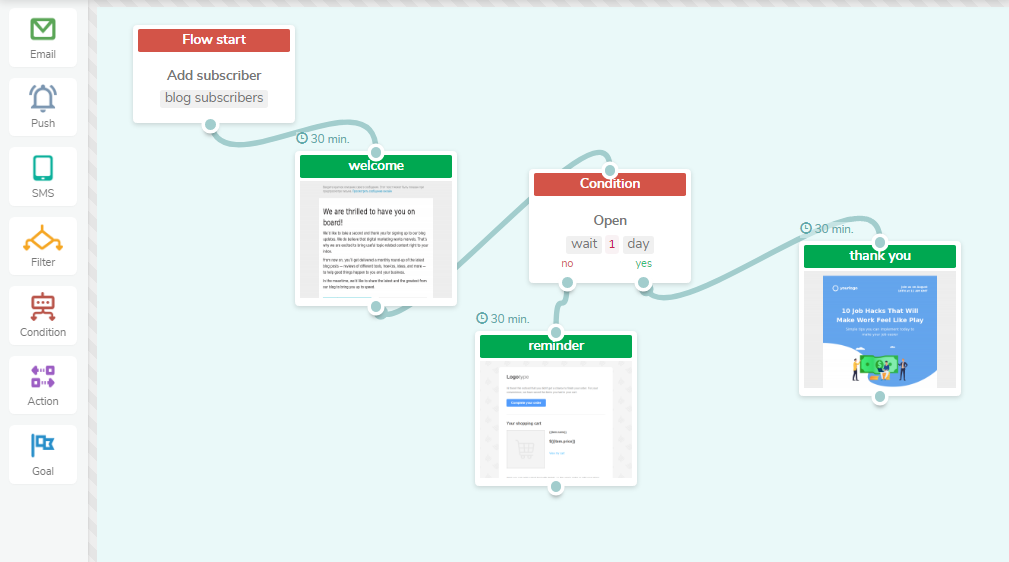 With Automation 360, you can create an email workflow in minutes
With Automation 360, you can create an email workflow in minutes
Set transparent KPIs and track them
The only way to make sure the demand for your brand is growing is to set crystal-clear KPIs upfront.
In the first stages of the funnel, look for:
- new visitors;
- sign-ups;
- content engagement;
- open and unsubscribe rates, bounce rates;
- session duration.
In the middle of the funnel, these metrics become the most important:
- requests for contacts;
- requests for a demo;
- booked meetings.
After your sales team closes the deal, analyze your:
- cost per lead;
- number of opportunities (leads);
- pipeline velocity;
- churn rate;
- average sales cycle length;
- win rates;
- average deal size;
- lifetime customer value.
Generate upsells and renewals
B2B companies lose around 28% of their clients every year. We’ve already mentioned that building sustainable relationships with customers should be at the core of any demand generation marketing campaign. If you don’t have a solid customer base yet, include customer retention and customer appreciation tactics in your strategy.
Here are a few ways you can show your customers they are still important to you:
- invite them to register for your webinar;
- offer a charity donation of their choice instead of a typical discount;
- keep them up to date about new features;
- ask them for feedback and give something back;
- listen to their requests and be quick to act on them;
- start a customer loyalty program;
- give unexpected gifts and bonuses to high-value customers;
- make sure you invest enough in your customer service;
- send kind reminders and nice freebies to inactive users before they cancel.
How to use email marketing as a part of a demand generation campaign
Email marketing is your best weapon when it comes to creating a demand for complex products and IT-solutions. You can’t solely rely on whimsy and unpredictable social media algorithms to get your message across. We’ve picked some examples from our blog to help you understand the intricacies and beauty of an effective email strategy. Let’s see how it’s done.
Customer onboarding
The average open rate of a welcome email is around 50%, making it 86% more effective than standard email campaigns. You can reflect brand personality in onboarding emails and educate customers on the key benefits of your product.
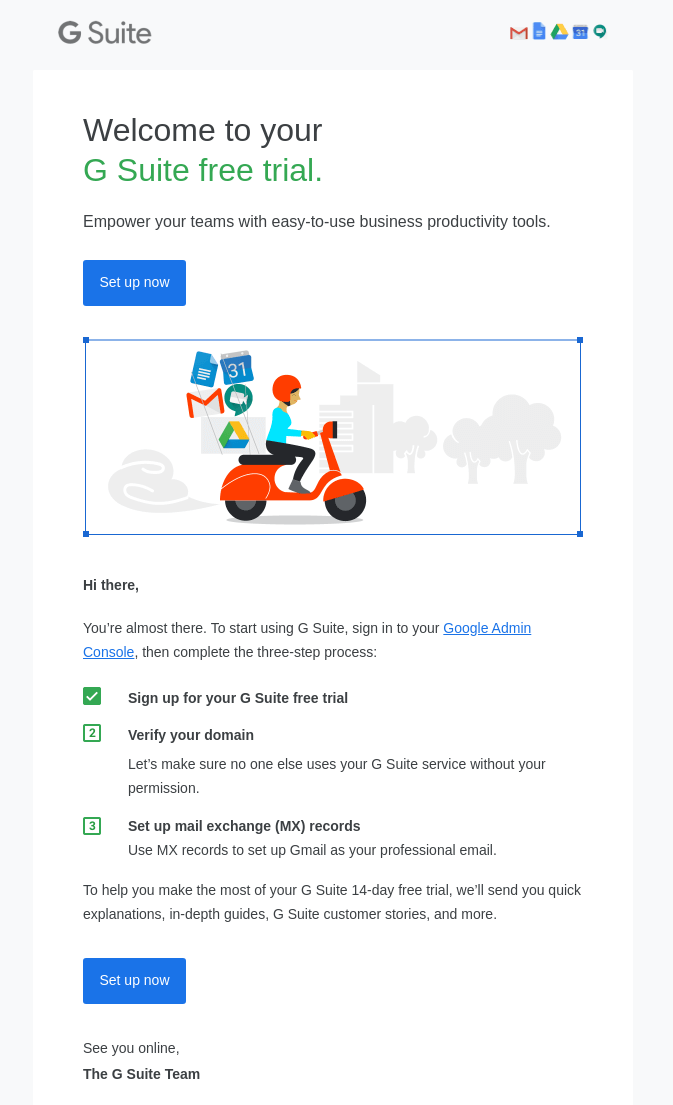 An onboarding email from G Suite
An onboarding email from G Suite
So, onboarding emails can become the flagship of your email marketing campaigns. Learn more about that in our article on crafting onboarding email campaigns.
Survey emails
Survey emails are emails sent to the target audience with the aim of collecting data for further analysis.
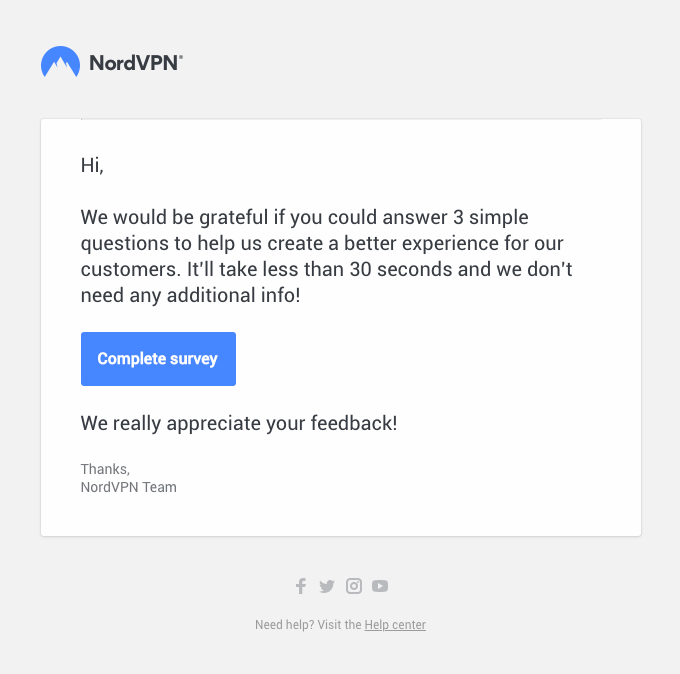 NordVPN politely asks for feedback; source: Really Good Emails
NordVPN politely asks for feedback; source: Really Good Emails
They help you increase loyalty to your brand, strengthen customer relationships, and get inspired by users’ feedback. Check our post explaining the basics and showing some examples of survey emails.
Updates and announcements
You need skillfully crafted emails to inform your customers and get them to use new features. Announce updates in a cool, professional, and engaging way.
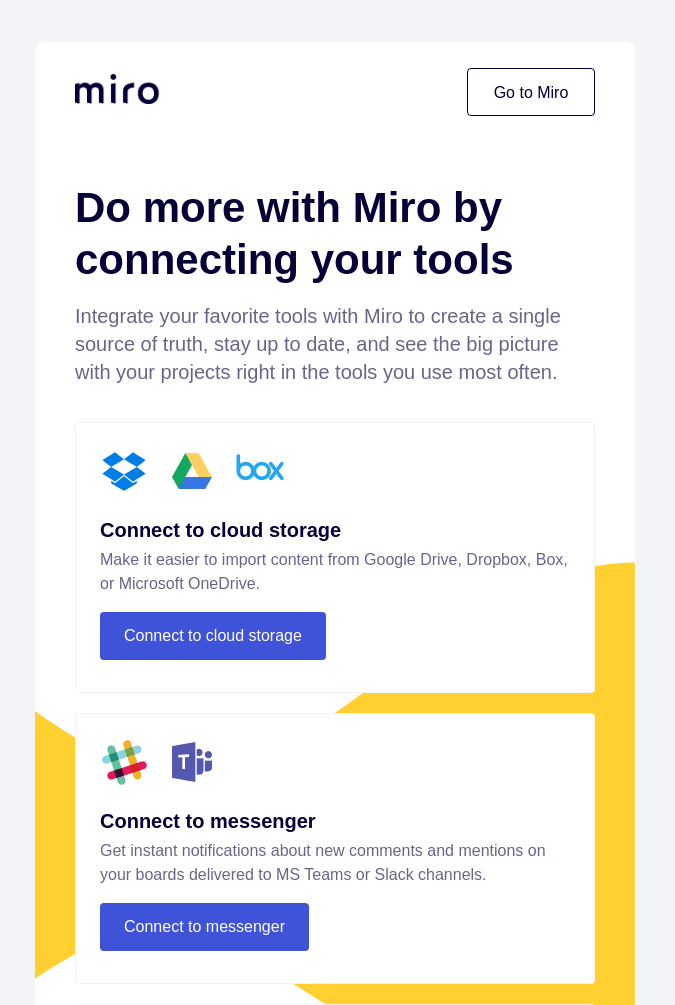 Miro doesn’t forget to explain to users what their new features can do for them; source: Really Good Emails
Miro doesn’t forget to explain to users what their new features can do for them; source: Really Good Emails
We put together some examples of strong and convincing types of B2B emails you must include in your strategy.
Webinar emails
Webinars are great for engaging with your leads and prospects, not to mention building up brand authority in your field. Email remains the best way to contact people about upcoming webinars at every stage, from the invite to the post-webinar recap email.
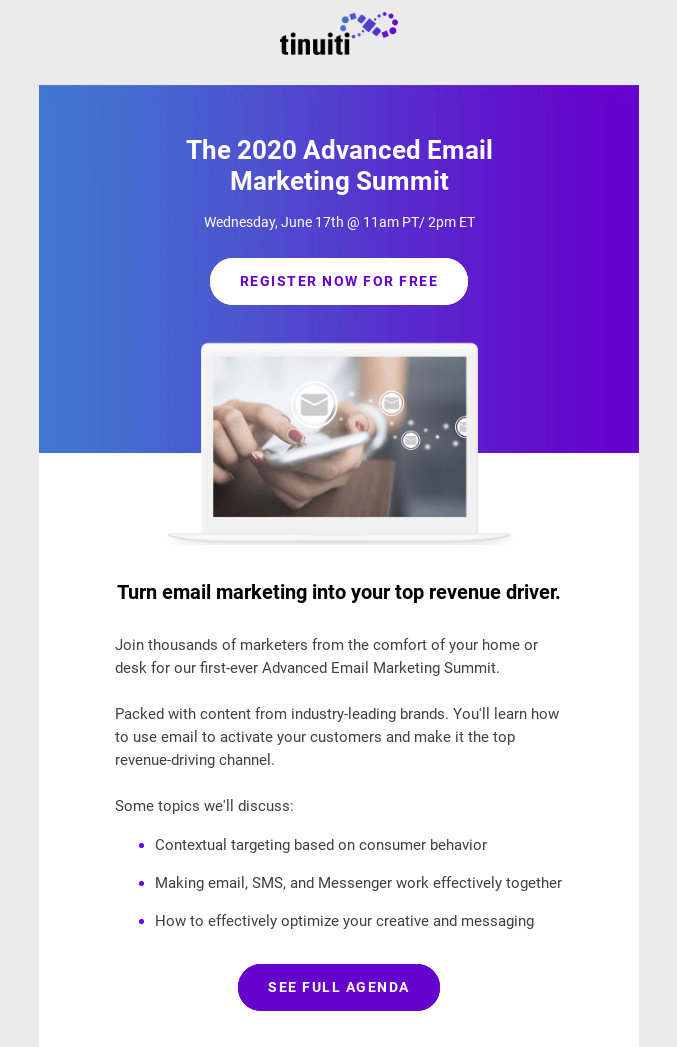 Tinuiti prefers a short but informative email that makes it easier for people to say yes; source: Really Good Emails
Tinuiti prefers a short but informative email that makes it easier for people to say yes; source: Really Good Emails
Take a look at our article explaining how to create a webinar email series.
Re-engagement emails
Do not let your product or service sit forgotten. This type of email will help you bring your passive subscribers back to life and reconnect with them.
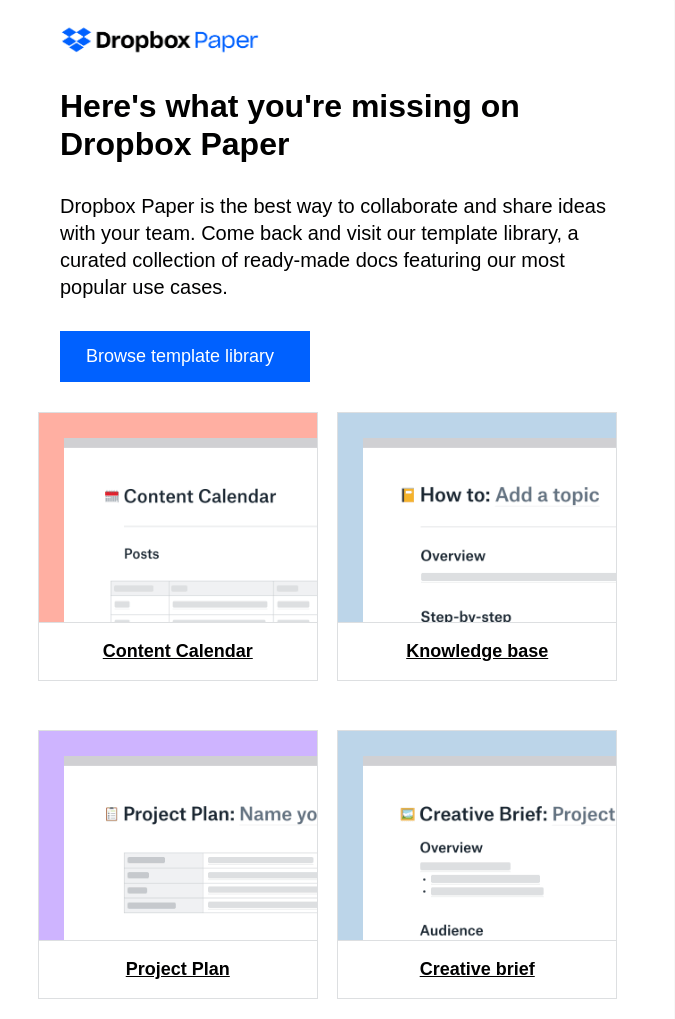 Dropbox lets idle contacts know how much they can win by using their product; source: Really Good Emails
Dropbox lets idle contacts know how much they can win by using their product; source: Really Good Emails
Learn how to remind passive subscribers about your brand in a witty and elegant way to win them back from our article on re-engagement emails.
Now what?
Demand generation marketing is the glue that holds the pieces together. In the long run, creating demand is the most natural and efficient way to keep your audience engaged and genuinely interested in your brand. To boost demand generation, start by mastering the art of email marketing. And when you decide to do so, remember, SendPulse is always here and ready to give you a helping hand.